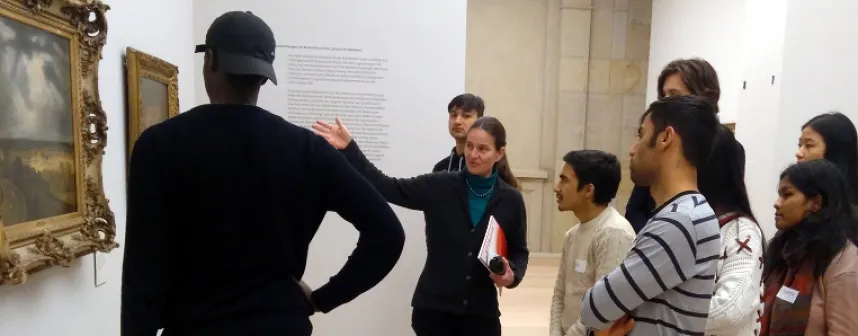The spread of Expressionism
October 18, 2018
It was represented by artists such as Henri Matisse, Emil Nolde, Käthe Kollwitz and Oskar Kokoschka. Starting in France and Germany, Expressionism spread worldwide at the beginning of the 20th century. In her book "The Routledge Companion to Expressionism in a Transnational Context", Isabel Wünsche, Professor of Art and Art History at Jacobs University Bremen, describes how this happened and which regional varieties developed.
, Cover of the book "The Routledge Companion to Expressionism in a Transnational Context"32 scientists from 25 countries are involved in the English-language compendium, which was supported by the German Federal Government Commissioner for Culture and the Media. In their essays, the scholars trace artistic developments and discussions in the context of the expressionist movement in the individual cultural regions - from Scandinavia to Eastern Europe and the Balkans to the Iberian Peninsula and on to South Africa, North and Latin America.
Central to the dissemination of this new art form was the journal "Der Sturm", edited by Herwarth Walden in Berlin, which many artists used to orient themselves towards the periphery of Europe. "The strong color language, the means of expression of graphic techniques such as woodcuts, and a personal pictorial language that was used to express emotional states in the interwar period, which went into verism, were attractive for many artists," emphasizes Wünsche. They were guided by artistic developments in Germany or France and on this basis created regional forms of Expressionism.
Prof. Dr. Isabel Wünsche (Ed.): The Routledge Companion to Expressionism in a Transnational Context, Routledge Taylor & Francis Group, 598 pages.
Questions will be answered by:
Prof. Dr. Isabel Wünsche | Professor of Art and Art History
i.wunsche [at] jacobs-university.de | Tel: +49 421 200-3311
